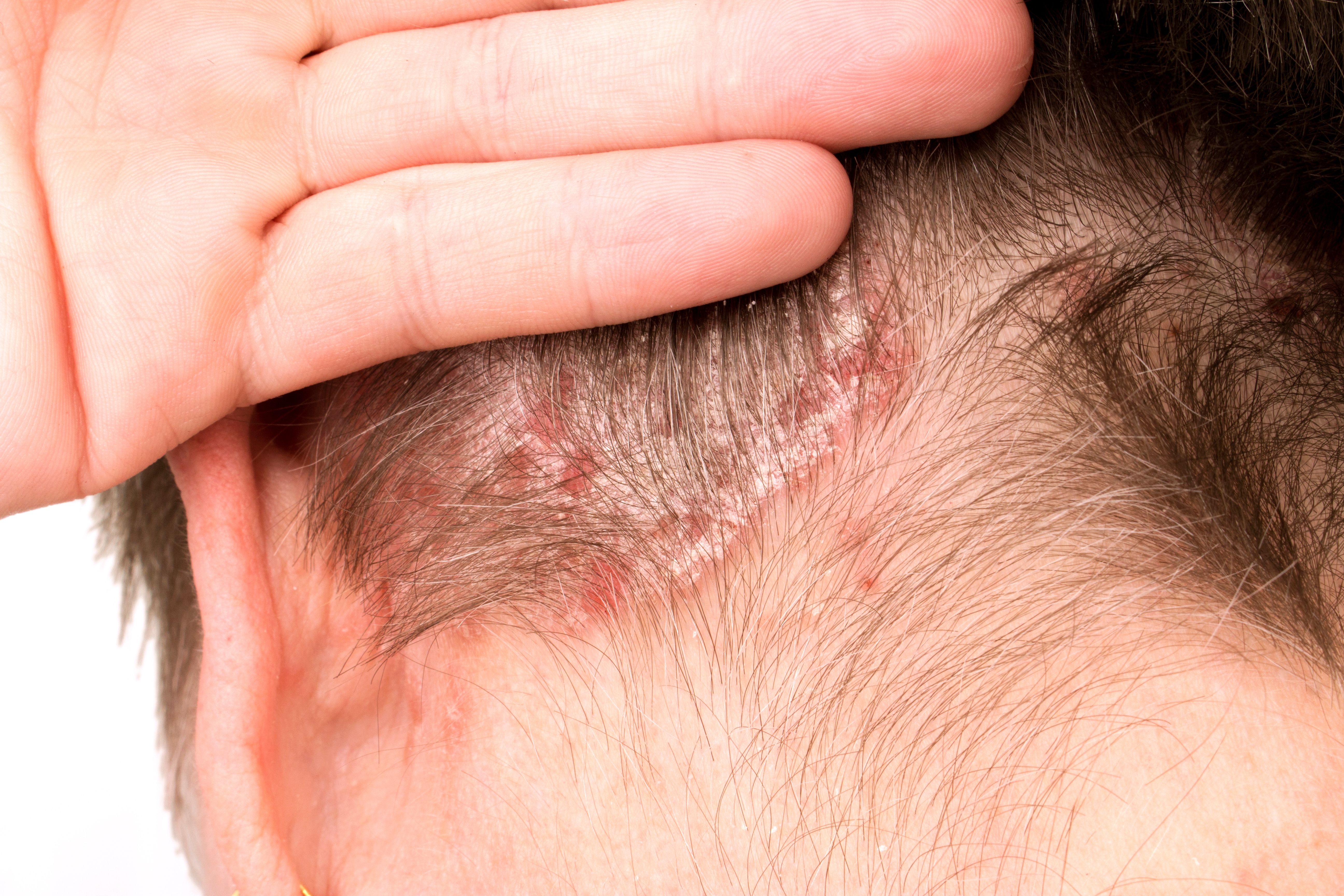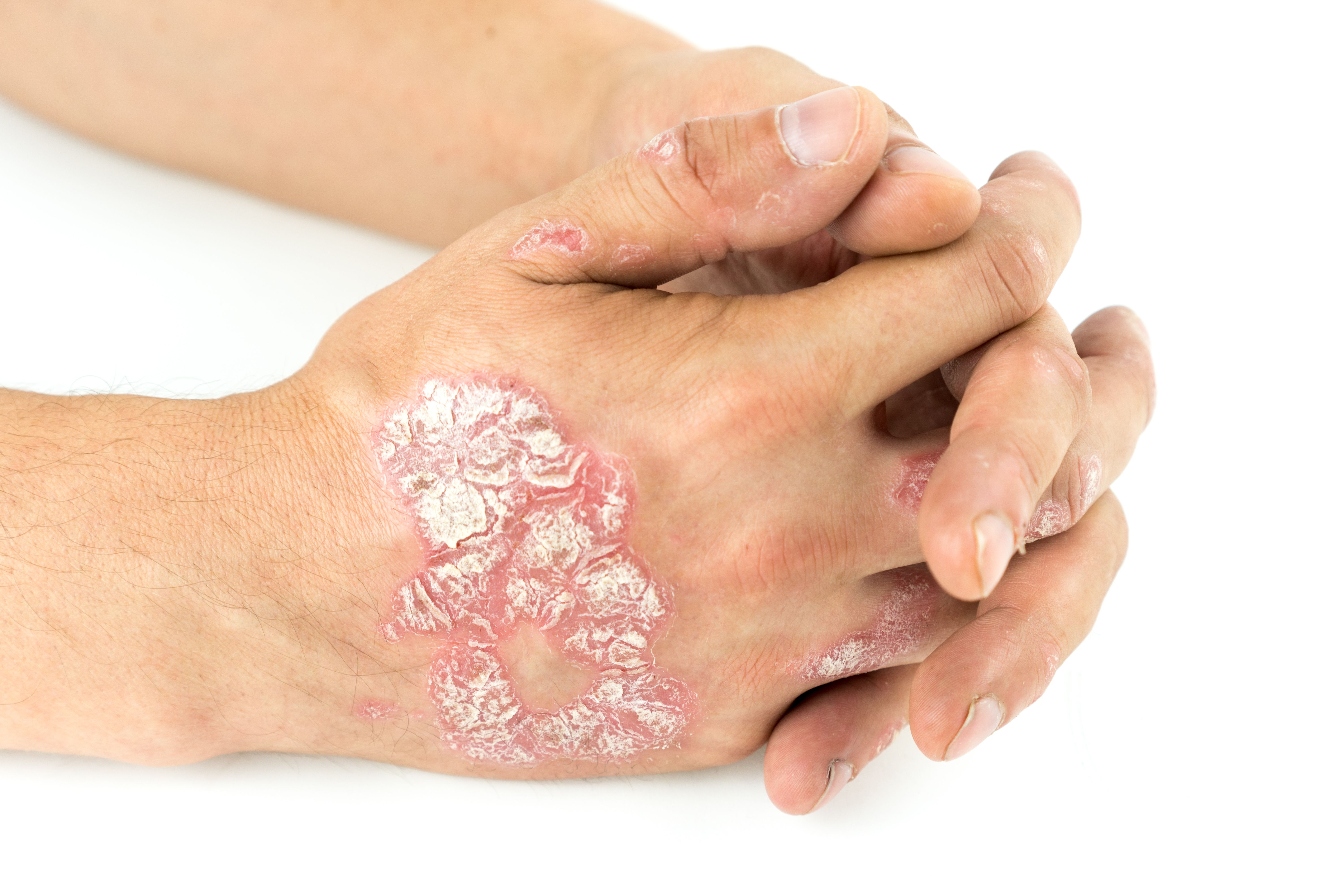News
Article
Alopecia Areata Risk Associated With Atopy, Allergies
Author(s):
A genetic study suggests people with allergies and eczema are more likely to develop alopecia areata, an autoimmune disease that causes hair loss. Researchers believe this link may be due to similar immune system responses.
Illustration of patient with AA at doctor | Image Credit: Rudzhan - stock.adobe.com

An increased risk of alopecia areata was significantly associated with atopy and allergies, especially hay fever, eczema, asthma, and allergies to pollen, dust, and cats, according to a study using genetic data.1
Alopecia, an autoimmune disease, has evidence of presenting a 16% increased risk of other autoimmune disorders among patients.2 Some diseases include thyroid disease, vitiligo, and lupus erythematosus. Reportedly, 39% of patient populations with AA cases also have atopic dermatitis, typically known as eczema.
Researchers utilized a Mendelian randomization (MR) study to evaluate associations of atopy and allergies on AA, expanding upon data from genome-wide association studies (GWAS).1 The study focus was to investigate the role of type 2 inflammatory responses in AA, recognize patterns of vulnerable populations, and develop personalized treatment methods for patients.
Among the 2-sample MR approach, single nucleotide polymorphisms (SNPs) from GWAS summary data were used as instrumental variables. The 6 phenotypes emphasized were hay fever, eczema, asthma, and allergies to cats, dust mites, and pollen.
Patient characteristics included an average age of 42.12 years old, and all participants were of European descent. Pleiotropy concerns were addressed using inverse variance weighted (IVW), MR-Egger regression, weighted median, maximum likelihood ratio, and weighted mode.
The IVW method was the primary analysis technique and revealed increased AA risk linked to hay fever (OR = 1.88, P = .02), eczema (OR = 6.16, P < .001), asthma (OR = 2.04, P = .02), pollen allergy (OR = 1.39, P < .001), dust allergy (OR = 1.25, P = .02), and cat allergy (OR = 1.24, P = .02). Every analysis method displayed consistent directionality.
These outcomes are consistent with reports from the National Alopecia Areata Foundation (NAAF) stating asthma, allergic rhinitis, and atopic dermatitis are common atopic conditions attributed to patients with AA.3 The NAAF also found autoimmune diseases linked to alopecia areata such as thyroid disease, type 1 diabetes, celiac disease, rheumatoid arthritis, and vitiligo.
Study results from the MR analysis are unlikely to be skewed by pleiotropy because the MR-Egger intercept test did not show any evidence of it.1 Additionally, the forest plots, which visually represent the study data, confirm that no single genetic variant significantly impacted the overall results, suggesting reliability.
One of the limitations is that the study only included participants from Europe, potentially making the findings not applicable to people from other continents. The study design also makes it difficult to definitively separate whether the observed effects are due to a single underlying mechanism or multiple independent effects of the investigated factors.
Based on the MR analysis, patients with these specific atopic and allergic conditions may benefit from early monitoring of AA. The results also highlight the importance of integrating patient history into AA management, especially since research has detected family history of autoimmune diseases in patients with AA.3
Dupilumab has emerged as an effective treatment for AA, demonstrating evidence of regulating T helper (Th)2 inflammatory responses in allergic diseases.4 This treatment was significant because AA had traditionally been classified as a Th1-driven disease. However, genomic susceptibility loci and cytokine activation data provided support for the involvement of the Th2 pathway as well.5 The efficacy of dupilumab as an antagonist that downregulates the Th2 response suggests its potential as a beneficial therapy for patients with AA.
Despite these findings, further studies regarding the specific mechanisms of the Th2 inflammatory pathways in AA and their interactions with the Th1 pathway are warranted, especially when devising personalized treatment.
References
1. Xu W, Zhang H, Wan S, Xie B, Song X. Genetic links between atopy, allergy, and alopecia areata: insights from a Mendelian randomization study. Allergy Asthma Clin Immunol. 2024;20(32):1-7. doi:10.1186/s13223-024-00892-w
2. Alopecia areata overview: types, causes, symptoms, and treatment. Pfizer. www.pfizer.com. https://www.pfizer.com/disease-and-conditions/alopecia-areata#:~:text=People%20with%20alopecia%20areata%20face
3. Related conditions. National Alopecia Areata Foundation. https://www.naaf.org/alopecia-areata/related-conditions/#:~:text=Atopic%20conditions%20are%20related%20to
4. Cai L, Wei Y, Zhao M, Zhuo J, Tao X, Lin M. Case report: Dupilumab therapy for alopecia areata in a 4-year-old patient resistant to baricitinib. Front Med. 2023;10:1-4. doi:10.3389/fmed.2023.1253795
5. Marks DH, Mesinkovska N, Senna MM. Cause or cure? Review of dupilumab and alopecia areata. J Am Acad Dermatol. 2023;88(3):651-653. doi:10.1016/j.jaad.2019.06.010





